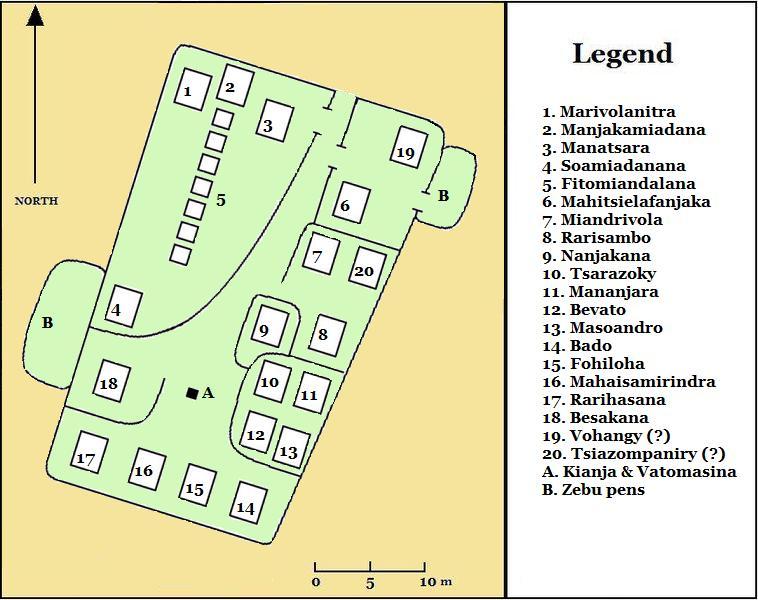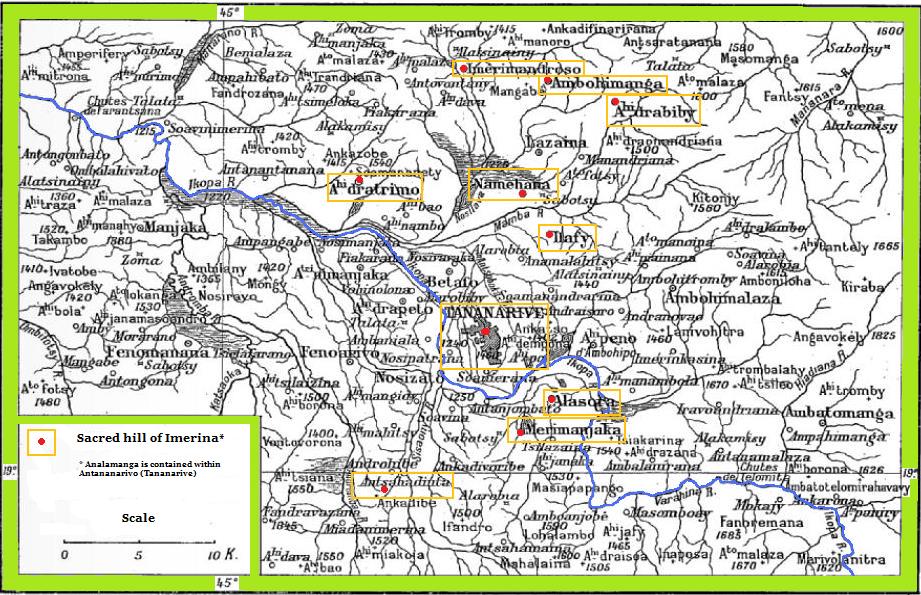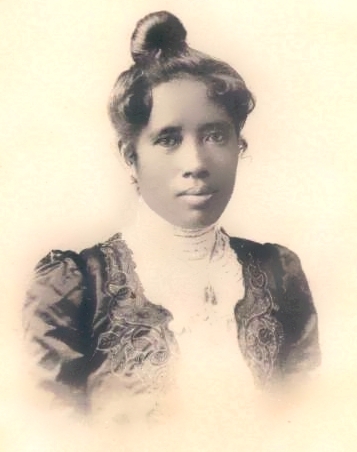|
Ambohimanga
Ambohimanga is a hill and traditional fortified royal settlement (''rova'') in Madagascar, located approximately northeast of the capital city of Antananarivo. It is situated in the commune of Ambohimanga Rova. The hill and the rova that stands on top are considered the most significant symbol of the cultural identity of the Merina people and the most important and best-preserved monument of the precolonial Merina Kingdom. The walled historic village includes residences and burial sites of several key monarchs. The site, one of the twelve sacred hills of Imerina, is associated with strong feelings of national identity and has maintained its spiritual and sacred character both in ritual practice and the popular imagination for at least four hundred years. It remains a place of worship to which pilgrims come from Madagascar and elsewhere. The site has been politically important since the early 18th century, when King Andriamasinavalona (1675–1710) divided the Kingdom of Imeri ... [...More Info...] [...Related Items...] OR: [Wikipedia] [Google] [Baidu] |
Ambohimanga Hill Madagascar Cropped Retouched
Ambohimanga is a hill and traditional fortified royal settlement (''Rova (Madagascar), rova'') in Madagascar, located approximately northeast of the capital city of Antananarivo. It is situated in the commune of Ambohimanga Rova. The hill and the rova that stands on top are considered the most significant symbol of the cultural identity of the Merina people and the most important and best-preserved monument of the precolonial Merina Kingdom. The walled historic village includes residences and burial sites of several key monarchs. The site, one of the twelve sacred hills of Imerina, is associated with strong feelings of national identity and has maintained its spiritual and sacred character both in ritual practice and the popular imagination for at least four hundred years. It remains a place of worship to which pilgrims come from Madagascar and elsewhere. The site has been politically important since the early 18th century, when King Andriamasinavalona (1675–1710) divided th ... [...More Info...] [...Related Items...] OR: [Wikipedia] [Google] [Baidu] |
Andriantsimitoviaminiandriana Andriandrazaka
Andriantsimitoviaminiandriana Andriandrazaka (also Andriantsimitoviaminandriandrazaka) was King of Avaradrano in the central highlands of Madagascar from 1710 to 1730, and King of neighboring Ambohidrabiby after defeating his brother, Andrianavalonimerina. He was a son of Andriamasinavalona, sovereign of the former Kingdom of Imerina, and his wife Ratompoindraoandriana. Sometime during his life Andriantsimitoviaminiandriana adopted Rakotomavo, who would later succeed him as King Andriambelomasina. As a child, Andriantsimitoviaminiandriana was sent to live in a village that his father named Ambohimanga. As a young man, his father granted him the region of Avaradrano surrounding the village, and while his father still lived he managed the daily affairs of state in Avaradrano without taking the title of king. He declared Ambohimanga the capital of the region, building numerous structures on the site and adding its first set of defensive walls, ditches and gates. The site's historic ... [...More Info...] [...Related Items...] OR: [Wikipedia] [Google] [Baidu] |
Andrianampoinimerina
Andrianampoinimerina () (1745–1810) ruled the Kingdom of Imerina on Madagascar from 1787 until his death. His reign was marked by the reunification of Imerina following 77 years of civil war, and the subsequent expansion of his kingdom into neighboring territories, thereby initiating the unification of Madagascar under Merina rule. Andrianampoinimerina is a cultural hero and holds near mythic status among the Merina people, and is considered one of the greatest military and political leaders in the history of Madagascar. Andrianampoinimerina took power upon deposing his uncle, King Andrianjafy, who had ruled over Imerina Avaradrano (Northern Imerina). Prior to Andrianampoinimerina's reign, Imerina Avaradrano had been locked in conflict with the three other neighboring provinces of the former kingdom of Imerina that had last been unified under King Andriamasinavalona a century before. Andrianampoinimerina established his capital at the fortified town of Ambohimanga, a site of ... [...More Info...] [...Related Items...] OR: [Wikipedia] [Google] [Baidu] |
Rova Of Antananarivo
The Rova of Antananarivo ( mg, Rovan'i Manjakamiadana ) is a royal palace complex (''rova'') in Madagascar that served as the home of the sovereigns of the Kingdom of Imerina in the 17th and 18th centuries, as well as of the rulers of the Kingdom of Madagascar in the 19th century. Its counterpart is the nearby fortified village of Ambohimanga, which served as the spiritual seat of the kingdom in contrast to the political significance of the Rova in the capital. Located in the central highland city of Antananarivo, the Rova occupies the highest point on Analamanga, formerly the highest of Antananarivo's many hills. Merina king Andrianjaka, who ruled Imerina from around 1610 until 1630, is believed to have captured Analamanga from a Vazimba king around 1610 or 1625 and erected the site's first fortified royal structure. Successive Merina kings continued to rule from the site until the fall of the monarchy in 1896, frequently restoring, modifying or adding royal structures within ... [...More Info...] [...Related Items...] OR: [Wikipedia] [Google] [Baidu] |
Andrianjafy
King Andrianjafy (before -1787) also known as Andrianjafinandriamanitra and Andrianjafinjanahary, was the king of Imerina Avaradrano, the northern part of the central highlands of Madagascar with its capital at Ambohimanga. His father Andriambelomasina bequeathed him the rule of Avaradrano while designating his nephew Ramboasalama to follow Andrianjafy in the order of succession. Andrianjafy did not accept this decree, instead preferring that his own son succeed him, and sought retribution against citizens of Avaradrano who acknowledged the latent authority of his nephew. In order to prevent Ramboasalama from rising to power, Andrianjafy devised a series of failed plans to kill his nephew. The king's ineffectiveness as a ruler and despotic behavior contributed to declining popularity among the people of Avaradrano. Popular support for Ramboasalama produced a coup d'état in which he replaced Andrianjafy as King Andrianampoinimerina. Andrianjafy fled to Ilafy, where he rallied an ar ... [...More Info...] [...Related Items...] OR: [Wikipedia] [Google] [Baidu] |
Andriamasinavalona
Andriamasinavalona (1675–1710), also known as Andrianjakanavalondambo, was a King of Imerina in the central highlands of Madagascar. He made significant and enduring contributions to the social, political and economic life of Imerina. Chief among these was the expansion of his territories and the pacification and unification of certain principalities that had become locked in violent conflict; Andriamasinavalona established and ruled over the largest extent of the Kingdom of Imerina. He gave the name of Antananarivo to the capital city that was rapidly expanding around the royal palace on the hill of Analamanga, created a large public square at Andohalo outside the gates of the city, and named a series of other locations within the city. He also took possession of a distant hill he renamed Ambohimanga as a lodging for his son Andriantsimitoviaminiandriana; the royal city that developed there has been declared a UNESCO World Heritage Site. The innovations of Andriamasinavalo ... [...More Info...] [...Related Items...] OR: [Wikipedia] [Google] [Baidu] |
Twelve Sacred Hills Of Imerina
The twelve sacred hills of Imerina are hills of historical significance to the Merina people of Madagascar. Located throughout Imerina, the central area of the highlands of Madagascar, the sites were often ancient capitals, the birthplaces of key public figures, or the tomb sites of esteemed political or spiritual leaders. The first set of sacred sites was designated by early 17th-century king Andrianjaka. The notion was re-sanctified under late 18th-century king Andrianampoinimerina, who replaced several of the earlier sites with new ones. More than 12 sites were thus designated as sacred over time, although the notion of twelve sacred hills was perpetuated because of the significance of the number 12 in Malagasy cosmology. Today, little concrete evidence of the former importance of many of these sites remains, but the significant archeological and cultural heritage of several of the sites has been preserved. The historic significance of the sites is best represented by the Rova ... [...More Info...] [...Related Items...] OR: [Wikipedia] [Google] [Baidu] |
Antananarivo
Antananarivo ( French: ''Tananarive'', ), also known by its colonial shorthand form Tana, is the capital and largest city of Madagascar. The administrative area of the city, known as Antananarivo-Renivohitra ("Antananarivo-Mother Hill" or "Antananarivo-Capital"), is the capital of Analamanga region. The city sits at above sea level in the center of the island, the highest national capital by elevation among the island countries. It has been the country's largest population center since at least the 18th century. The presidency, National Assembly, Senate and Supreme Court are located there, as are 21 diplomatic missions and the headquarters of many national and international businesses and NGOs. It has more universities, nightclubs, art venues, and medical services than any city on the island. Several national and local sports teams, including the championship-winning national rugby team, the Makis are based here. Antananarivo was historically the capital of the Merina peop ... [...More Info...] [...Related Items...] OR: [Wikipedia] [Google] [Baidu] |
Andriambelomasina
Andriambelomasina (ruled 1730–1770) was a Merina King of Imerina Avaradrano, the northern part of the central highlands of Madagascar. The kingdom's capital was located at Ambohimanga. Early years Born Rakotomavo ("Yellow Man") at Ambohitrontsy (also Ambohitrosy) to Princess Rangorinimerina and her husband, Prince Andriamifonozozoro. He was the grandson of King Andriamasinavalona of Imerina on his mother's side and was therefore a prince of Imerinatsimo, one of several independent principalities within the borders of the formerly united Merina kingdom. At the time of Rakotomavo's birth, Andriantsimitoviaminiandriana Andriandrazaka was the ruler of Imerina Avaradrano, the easternmost and largest of these Merina principalities. The king's marriages to multiple spouses did not yield heirs, although he was able to father an illegitimate child out of wedlock with a woman of non-noble blood. To satisfy the ancestral requirements establishing legitimacy of a sovereign of Imerina, An ... [...More Info...] [...Related Items...] OR: [Wikipedia] [Google] [Baidu] |
Ambohimanga Rova
Ambohimanga Rova is a rural commune in Analamanga Region, in the Central Highlands of Madagascar. It belongs to the district of Antananarivo Avaradrano and its populations numbers to 20,872 in 2018. It is situated at 27 km North-West from Antananarivo. Roads The town is crossed by the National Road 51. Economy The economy is based on agriculture. Rice, corn, peanuts, beans, manioc, soja and oignons are the main crops. Another important factor is tourism. The royal hill of Ambohimanga Ambohimanga is a hill and traditional fortified royal settlement (''rova'') in Madagascar, located approximately northeast of the capital city of Antananarivo. It is situated in the commune of Ambohimanga Rova. The hill and the rova that sta ... is situated in this commune and is a popular point of interest. References Analyse territoriale dans l’optique du developpement durable,cas de la commune rurale d’Ambohimanga Rova External links Populated places in Analamanga ... [...More Info...] [...Related Items...] OR: [Wikipedia] [Google] [Baidu] |
Kingdom Of Imerina
The Merina Kingdom, or Kingdom of Madagascar, officially the Kingdom of Imerina (–1897), was a pre-colonial state off the coast of Southeast Africa that, by the 19th century, dominated most of what is now Madagascar. It spread outward from Imerina, the Central Highlands region primarily inhabited by the Merina ethnic group with a spiritual capital at Ambohimanga and a political capital west at Antananarivo, currently the seat of government for the modern state of Madagascar. The Merina kings and queens who ruled over greater Madagascar in the 19th century were the descendants of a long line of hereditary Merina royalty originating with Andriamanelo, who is traditionally credited with founding Imerina in 1540. In 1883, France invaded the Merina Kingdom to establish a protectorate. France invaded again in 1894 and conquered the kingdom, making it a French colony, in what became known as the Franco-Hova Wars. History Hova-Vazimba conflict Madagascar's central highlands we ... [...More Info...] [...Related Items...] OR: [Wikipedia] [Google] [Baidu] |
Merina Kingdom
The Merina Kingdom, or Kingdom of Madagascar, officially the Kingdom of Imerina (–1897), was a pre-colonial state off the coast of Southeast Africa that, by the 19th century, dominated most of what is now Madagascar. It spread outward from Imerina, the Central Highlands region primarily inhabited by the Merina ethnic group with a spiritual capital at Ambohimanga and a political capital west at Antananarivo, currently the seat of government for the modern state of Madagascar. The Merina kings and queens who ruled over greater Madagascar in the 19th century were the descendants of a long line of hereditary Merina royalty originating with Andriamanelo, who is traditionally credited with founding Imerina in 1540. In 1883, France invaded the Merina Kingdom to establish a protectorate. France invaded again in 1894 and conquered the kingdom, making it a French colony, in what became known as the Franco-Hova Wars. History Hova-Vazimba conflict Madagascar's central highlands w ... [...More Info...] [...Related Items...] OR: [Wikipedia] [Google] [Baidu] |







